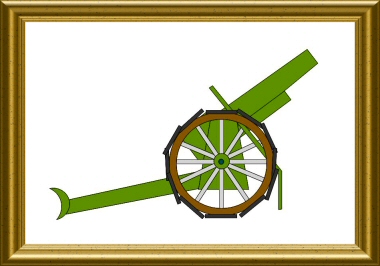|
|
|
|
|
|
|
 France
|
Mortier de 220mm Mle 1916 TR Schneider |
 Heavy artillery
|
|
|
Contributor :
|
Location :
France
Draguignan (83)
Musée de l'Artillerie
Coordinates :
Lat : 43.52840 / Long : 6.49790
|
General comments on this surviving gun :
Identical items in the same location :
1
Items covered by this file :
1
|
|

|

|

|
A rare survivor of this famous weapon is exposed in the Draguigna artillery museum
|
|
Markings : '220 Mle 1915 - Schneider - Le Creusot 1918 - Nr 414'
|
|
|
Historic and technical information
|
|
Denomination :
M 220 Mle 1916 TR Schneider
|
Origin :
 (
Schneider)
(
Schneider)
|
|
Historic context :
The Schneider Works in Le Creusot developed between 1914 a modern and complete artillery system for Russia. Just before the war outbreak, the talented company had the opportunity to demonstrate that experience and the quality of the related materials to have several of these weapons adopted in emergency (after some adaptations including the adaptation of the calibres to metric dimensions compatible with the existing ammunition standards) by the French army in desperate need of heavy artillery weapons.
Less numerous than the famous '155 C Mle 1915' coming from the same family, the 'Mortier Schneider de 9 pouces' (9 inches Scheider mortar) designed for Russia was transformed into the 'Mortier de 220 mm TR Mle 1915 Schneider and adopted by the French army as the winner of the January 1913 contest organized for the selection of a new modern siege and fortress weapon hanving the 220 mm calibre already present within the old de Bange system, and able to fire on its wheels the ammunitions of the old 1880 mortar, 40 such mortars were delivered to the army at the end of 1916 and arrived on the battlefield in March 1917.
A heavier model equipped with rubber wheelbands was then introduced with the 'Mortier de 220 mm TR Mle 1916 Schneider. The plants were long to produce this new weapon, so that it could only equip the batteries massively from 1918.
Although one can consider this weapon as a French answer to the brilliant 21cm German mortars, the very good ballistic properties of the French mortar against field fortifications were somehow compensated by a mediocre mobility because of its heavy weight, the need to transport it into 2 separate loads (barrel and carriage), and its difficult setup in position (2 hours needed).
The French army was aligning 376 such guns in May 1940.
|
Technical data :
- Complete description : 220mm Quick Fire Mortar M 1915 Schneider
- Design year : 1916
- Calibre : 220.00 mm
- Weight in firing position : 7455 kg (Mle 15) or 7800 kg (Mle 16)
- Weight for transportation :
- Tube length in calibres : 7.00
- Grooves : 92 constant angle 10 degrees to the right
- Projectile weight : 100.5 kg
- Initial speed : 415 m/s
- Fire rate : 6 rounds / 5 minutes
- Range : 10800 m
- Elevation range : +25 to +65 degrés
- Direction range : 6 degrees total range
|
Sources
|
|
|
|